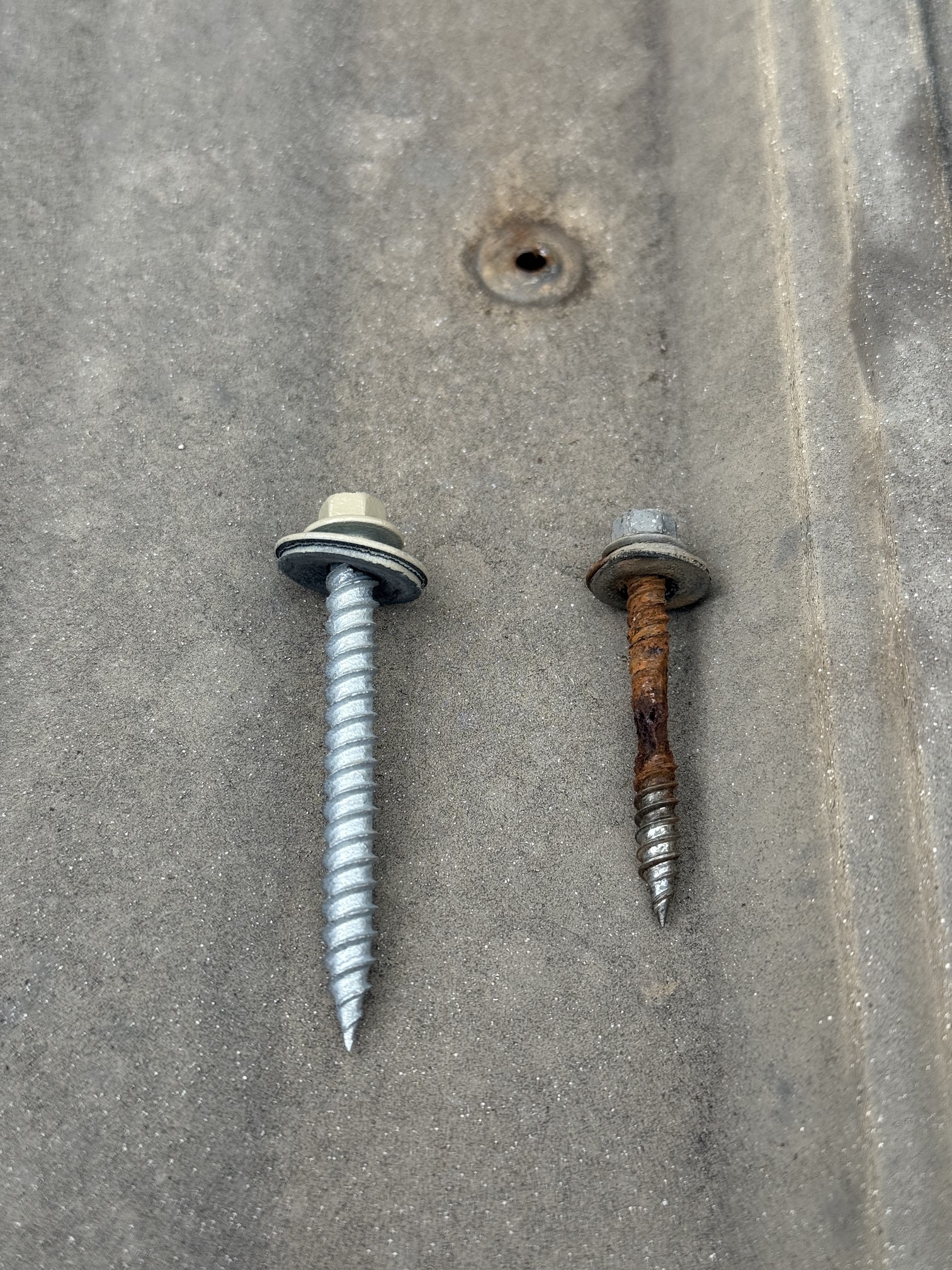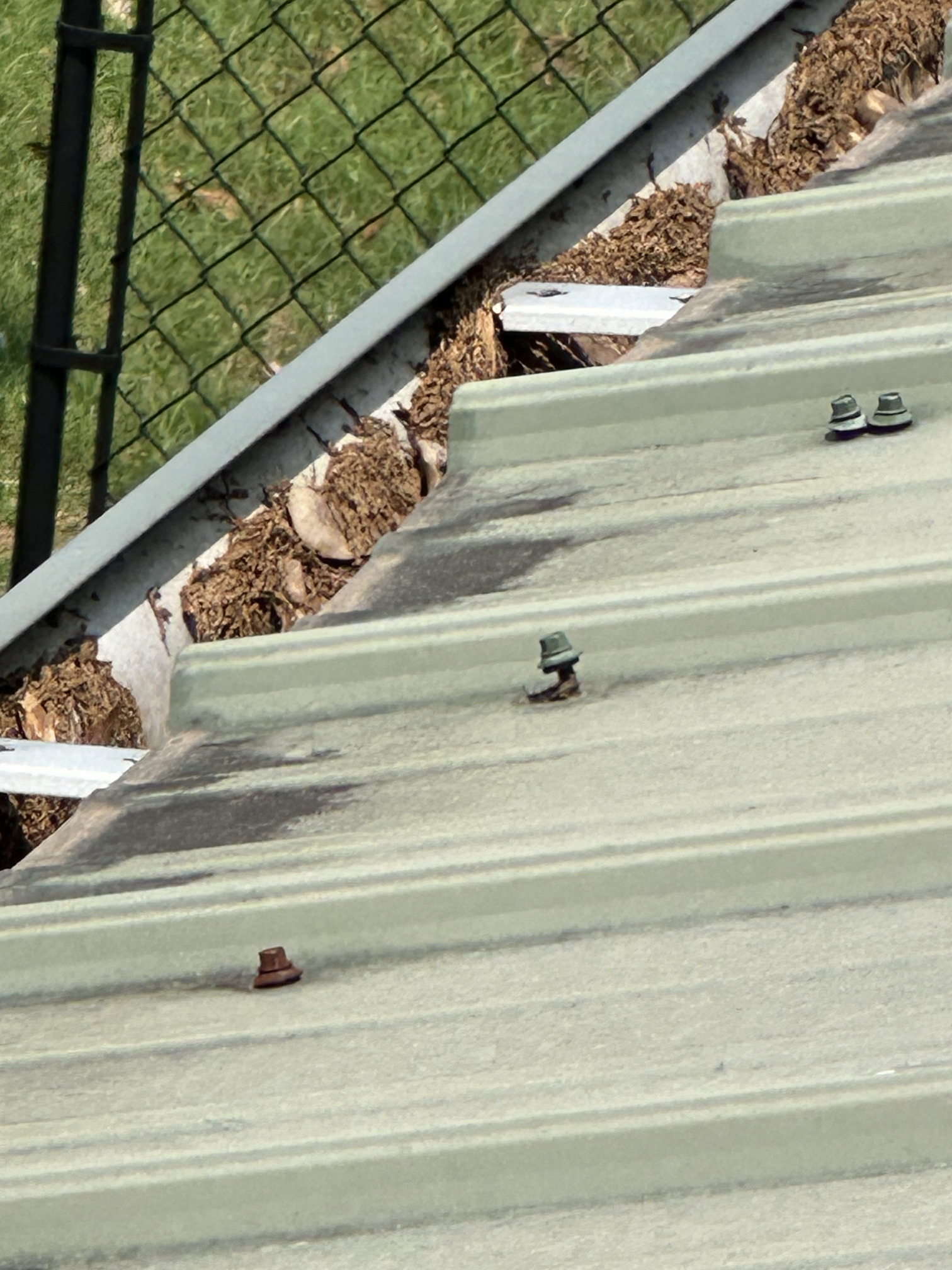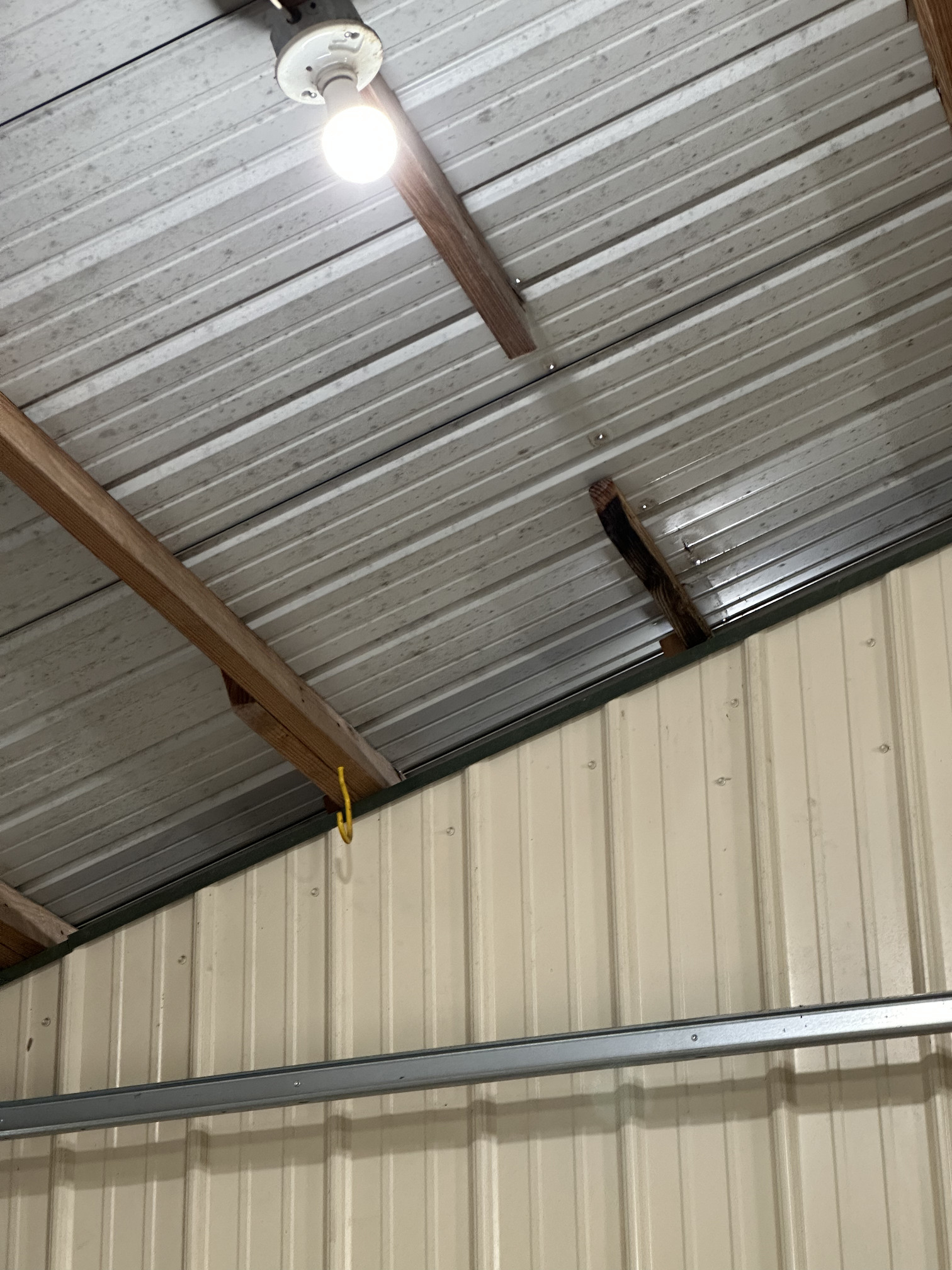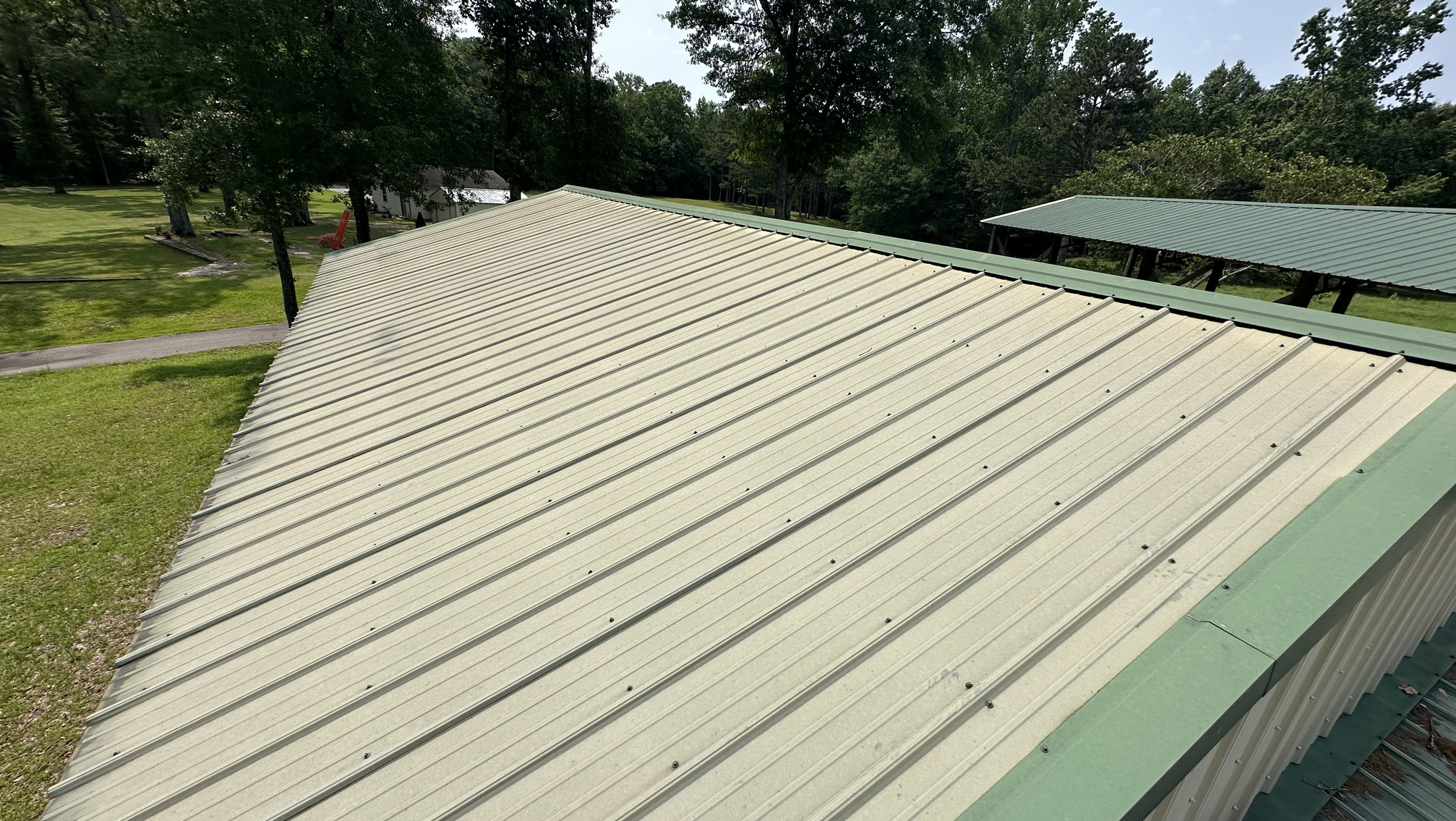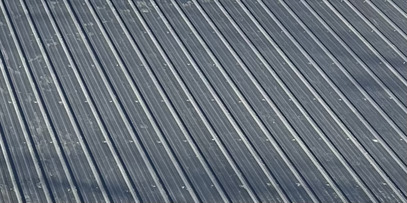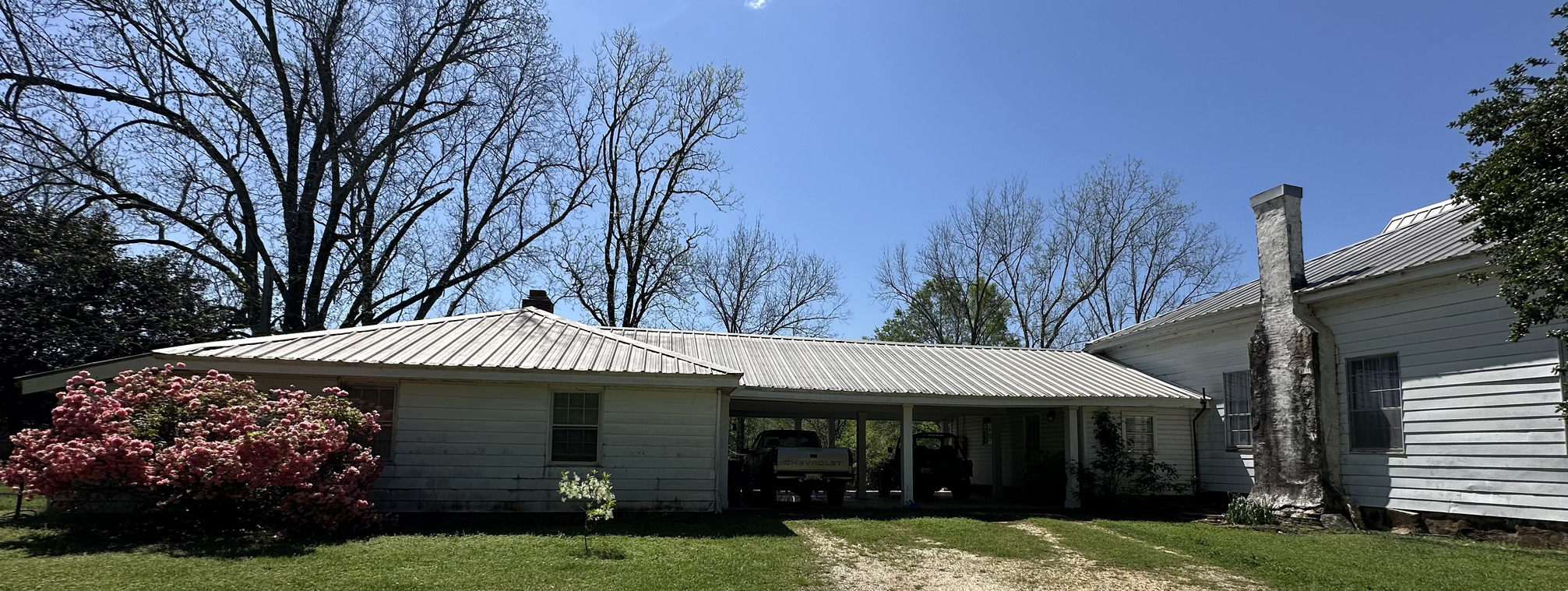Replacing Screws and Neoprene Washers on Classic Low-Rib Metal Roofs
On most classic low-rib metal roofs, the exposed fasteners are the weak link once the roof hits the 10–15 year mark. The original screws often aren’t stainless or heavy-coated, and the small neoprene washers break down from sun, heat, and weather. Over time, the rubber compresses, flattens, or cracks, letting a little water creep in around the shank. Once that happens, rust starts eating away at the screw — and sometimes the metal panel around it.
When we replace them, we don’t just match the old screws — we upgrade. We use oversized replacement screws that are longer, have a wider diameter, and feature wider neoprene washers. This combination bites deeper into the substrate for better pull-out resistance and seals the existing hole more effectively, even if it’s been widened from years of panel expansion and contraction.
In the first photo, you can see exactly what happens to the originals: the washer is shot, the plating’s gone, and the screw is rusted almost to the core. By swapping them with upgraded fasteners, you stop the water intrusion, tighten the panel back down, and extend the roof’s life without a full replacement.
In the second photo, you can see an example of a screw rejecting out of the roof. This typically happens over time, often (but not always) due to excessively hot attics lacking proper ventilation, as rafters shrink and exert pressure on screws, pushing them back out, and creating leak points.
In the third photo, a purlin was rotted due to long-term leaking from a missed screwhole that had been left uncaulked. We removed the old purlin (pictured), then replaced it and added sister 2x4s to catch the hole locations (not shown).
In the fifth photo, we didn’t just swap out screws — we fixed the root cause of the failures: a weak substrate. The original fasteners were driven into ½-inch OSB, which offered minimal holding power and had already allowed leaks in multiple spots. To correct this, we removed the old panels, installed 1×4 purlins at 2-foot centers (aligned precisely with the existing screw holes in the metal), and then re-fastened the panels through the new purlins. While we often prefer using 2×4 purlins under classic-rib metal for even greater pull-out resistance, the fascia and other site details made 1×4 the better choice on this project.
